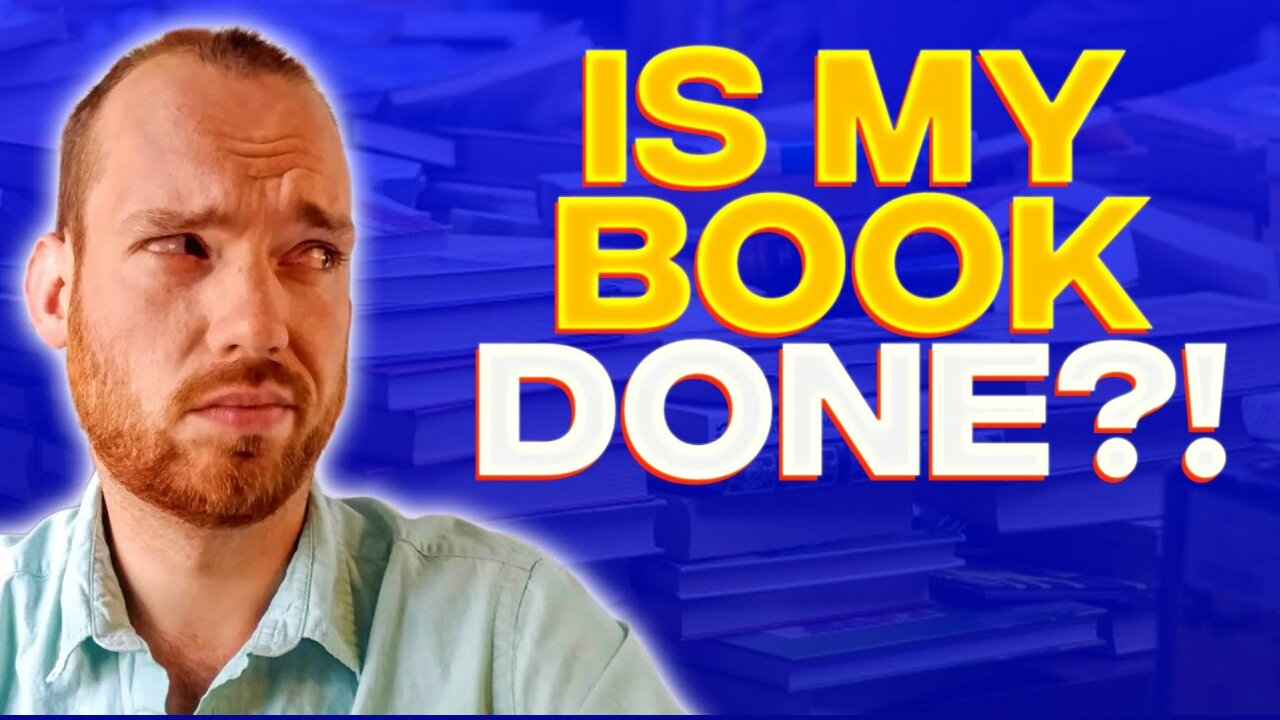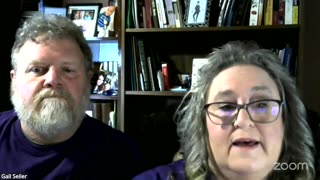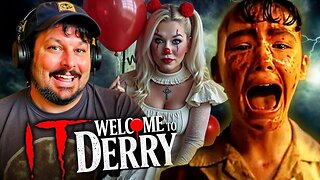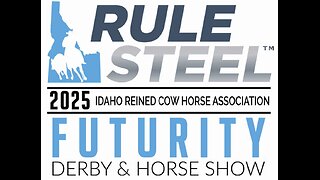Premium Only Content

How do you know when your book is done? Celebrity Ghostwriter and Writing Coach Joshua Lisec Answers
👉 Write a useful book that converts readers into high-paying clients. Free training shows you how: https://lisecghostwriting.com/golden/ 📖
Joshua Lisec answers a question every aspiring author eventually faces: how do you know when your book is done? The celebrity ghostwriter and persuasive writing coach pulls from his experience as a professional ghostwriter and bestselling author to give clear, practical book writing tips that move beyond guesswork and internet confusion. Lisec lays out a checklist rooted in what he calls the six pillars of influential content — criteria that separate a manuscript that merely exists from a manuscript that persuades readers to act, builds book revenue, and creates real-world opportunities for the author.
Lisec frames the problem honestly: finishing a manuscript is one thing; knowing the manuscript is ready to publish or to pitch to agents is another. He explains that authors who wonder “How do you know when your book is finished” or “How do you write a book and get it published step by step” need reliable standards, not gossip or conflicting advice. As a celebrity ghostwriter and writing coach, Lisec has guided entrepreneurs, public figures, and first-time authors through that exact decision point, and he distills the process into actionable nonfiction book writing tips and general book writing tips anyone can use.
First, Lisec asks authors to evaluate whether their manuscript demonstrates credibility. Does the book show lived experience and outcomes? This is a central pillar: readers and industry gatekeepers want to know whether the author has actually done the work they claim. Credibility is what separates a hobbyist’s memoir from a marketable thought leadership book. These are the criteria Lisec uses when he consults as a professional ghostwriter and when he helps clients project realistic book revenue and long-term ROI.
Second, Lisec evaluates clarity and accessibility. One of his hallmark pieces of advice is deceptively simple: write so that a reader with a fifth-grade reading level can grasp your ideas without losing nuance. That’s one of his top nonfiction book writing tips—simplify language, tighten sentences, and use concrete examples so readers don’t pause, get distracted, and put the book down. As a writing coach, Lisec tests manuscripts for readability and flow because the easier a book is to read, the more likely it will be finished and recommended.
Third, he examines the book’s persuasive power. Persuasive writing isn’t manipulation; it’s the craft of leading a reader toward a meaningful action. Lisec—who works as a celebrity ghostwriter and professional ghostwriter—assesses whether a manuscript converts skeptics into evangelists. That includes a strong call to action, useful book upgrades, and clear pathways for readers to move from reading a chapter to becoming clients, customers, or advocates. Authors who ask “is my book idea good?” will find this a practical test: does your idea connect to a reader outcome that persuades action?
Fourth, Lisec looks for counter-industry insight. Does the book add a contrarian or novel viewpoint that differentiates it from competitors? A manuscript that merely recycles common advice won’t drive readers to change behavior or create book revenue. Famous ghostwriters and ghostwriter celebrities he’s worked with all aim to make sure a book says something distinct, something that commands attention in crowded categories.
Fifth, he considers circulation potential. A great manuscript can only sell if it can be shared. Lisec stresses that word-of-mouth drives the majority of book sales, so a book must appeal broadly enough to be passed from reader to reader. This is the business-minded pulse beneath his advice as an entrepreneur ghostwriter: if a manuscript has tight, local appeal only, it will struggle to earn significant traction.
Sixth, he evaluates the call-to-action infrastructure: landing pages, book upgrades, funnels, and how the book integrates into the author’s broader business model. As a ghostwriter for entrepreneurs and a ghostwriter for celebrities, Lisec designs books as revenue engines, not decorative credentials. Authors who want to know “How do you write a book and get it published step by step” need to plan the post-publication ecosystem before declaring their manuscript finished.
Throughout the video, Lisec addresses common myths that stall authors. He debunks the idea that “done” means “perfect.” Instead, he reframes the question: is the book ready to perform the functions you need it to perform—build credibility, persuade readers, and drive measurable book revenue? He also explains when to seek external validation from industry professionals: developmental editors, line editors, and certified ghostwriters who can objectively check the six pillars. As a professional ghostwriter who has written dozens of books, Lisec stresses the value of an impartial manuscript strategy session to identify gaps and prioritize fixes.
Lisec also offers a practical next step: a complimentary manuscript strategy session that evaluates whether an author’s draft checks the six pillars. That session is designed for authors who are unsure about whether their work is publishable or for those who want a step-by-step plan to move from manuscript to market. He reminds viewers that some manuscripts are genuinely finished and need only packaging and publishing help; others need revision on specific pillars. Knowing which situation applies is the critical difference between rewrites that matter and busywork that stalls publication.
This video is both a guide and a reality check: finishing a book is not a single moment of crossing a finish line but a set of evidence-based decisions that prove the manuscript will do the job it’s supposed to do. Lisec’s approach blends craft (persuasive writing and solid editing) with business strategy (book revenue and circulation potential), which is why so many authors consult him when they wonder “How do you know when your book is finished.”
For authors seeking concrete support, the video connects the craft of writing to publishing strategy. Lisec combines book writing tips and nonfiction book writing tips with the business acumen required to turn a finished manuscript into a performing asset. Aspiring authors who follow his checklist will find themselves better positioned to answer the key question: not only “is my book done?” but “is my book ready to do the work I need it to do?”
Joshua Lisec closes the session by inviting authors to test their manuscripts against the six pillars and to consider a professional ghostwriter or writing coach when objectivity is needed. For anyone wrestling with a near-finished draft or wondering how to move from manuscript to money-making book, this video supplies both a compass and a map.
-
 2:01:08
2:01:08
LFA TV
1 day agoTHE RUMBLE RUNDOWN LIVE @9AM EST
121K11 -
 1:28:14
1:28:14
On Call with Dr. Mary Talley Bowden
3 hours agoI came for my wife.
4.01K3 -
 1:06:36
1:06:36
Wendy Bell Radio
8 hours agoPet Talk With The Pet Doc
36K24 -
 30:58
30:58
SouthernbelleReacts
2 days ago $5.58 earnedWe Didn’t Expect That Ending… ‘Welcome to Derry’ S1 E1 Reaction
16.9K8 -
 13:51
13:51
True Crime | Unsolved Cases | Mysterious Stories
5 days ago $14.14 earned7 Real Life Heroes Caught on Camera (Remastered Audio)
40.7K9 -
 LIVE
LIVE
Total Horse Channel
14 hours ago2025 IRCHA Derby & Horse Show - November 1st
132 watching -
 4:19
4:19
PistonPop-TV
6 days ago $5.78 earnedThe 4E-FTE: Toyota’s Smallest Turbo Monster
28.8K -
 43:07
43:07
WanderingWithWine
6 days ago $3.20 earned5 Dreamy Italian Houses You Can Own Now! Homes for Sale in Italy
27.5K9 -
 LIVE
LIVE
Spartan
23 hours agoFirst playthrough of First Berserker Khazan
144 watching -
 28:01
28:01
Living Your Wellness Life
2 days agoTrain Your Hormones
20.7K1